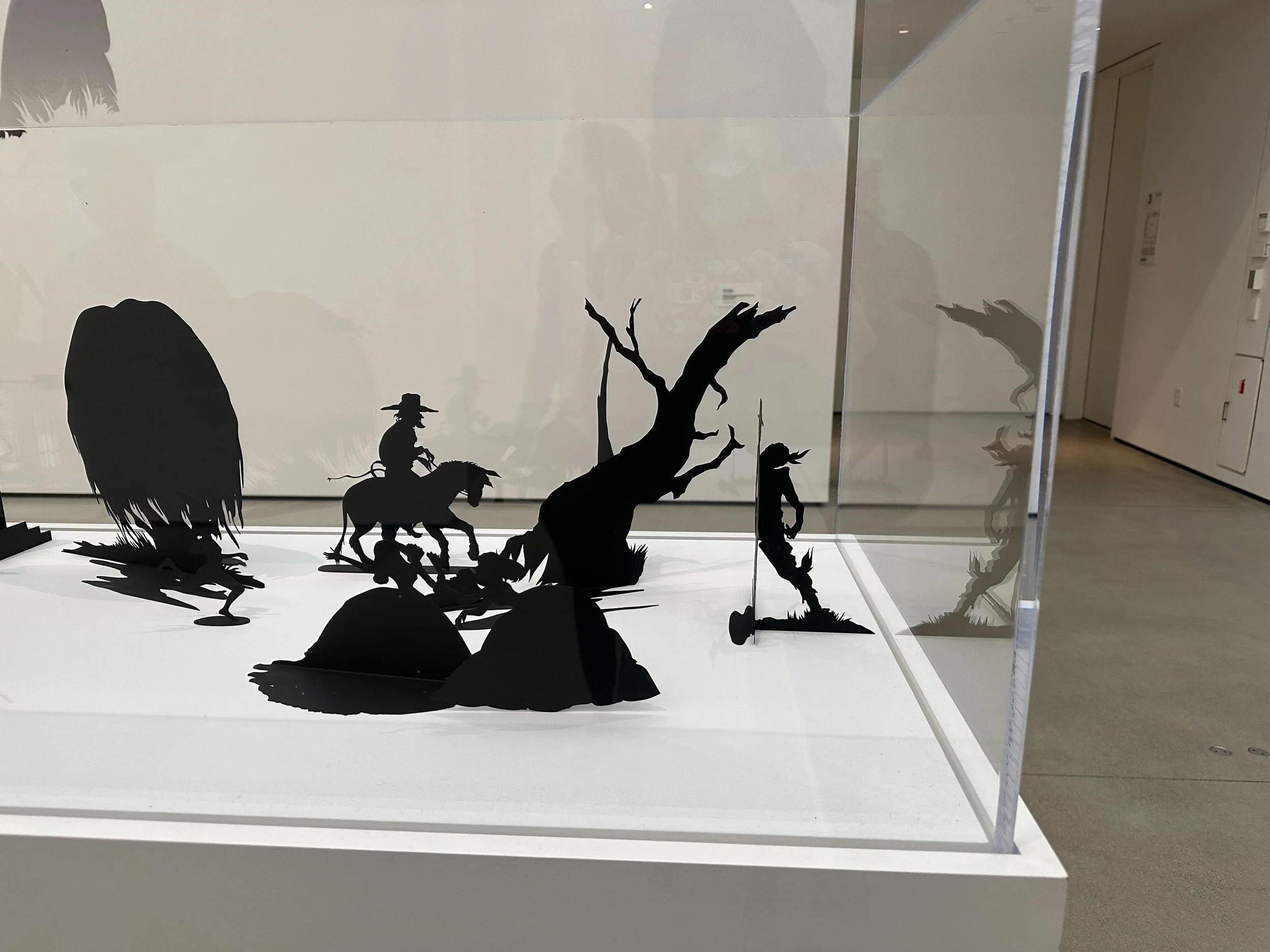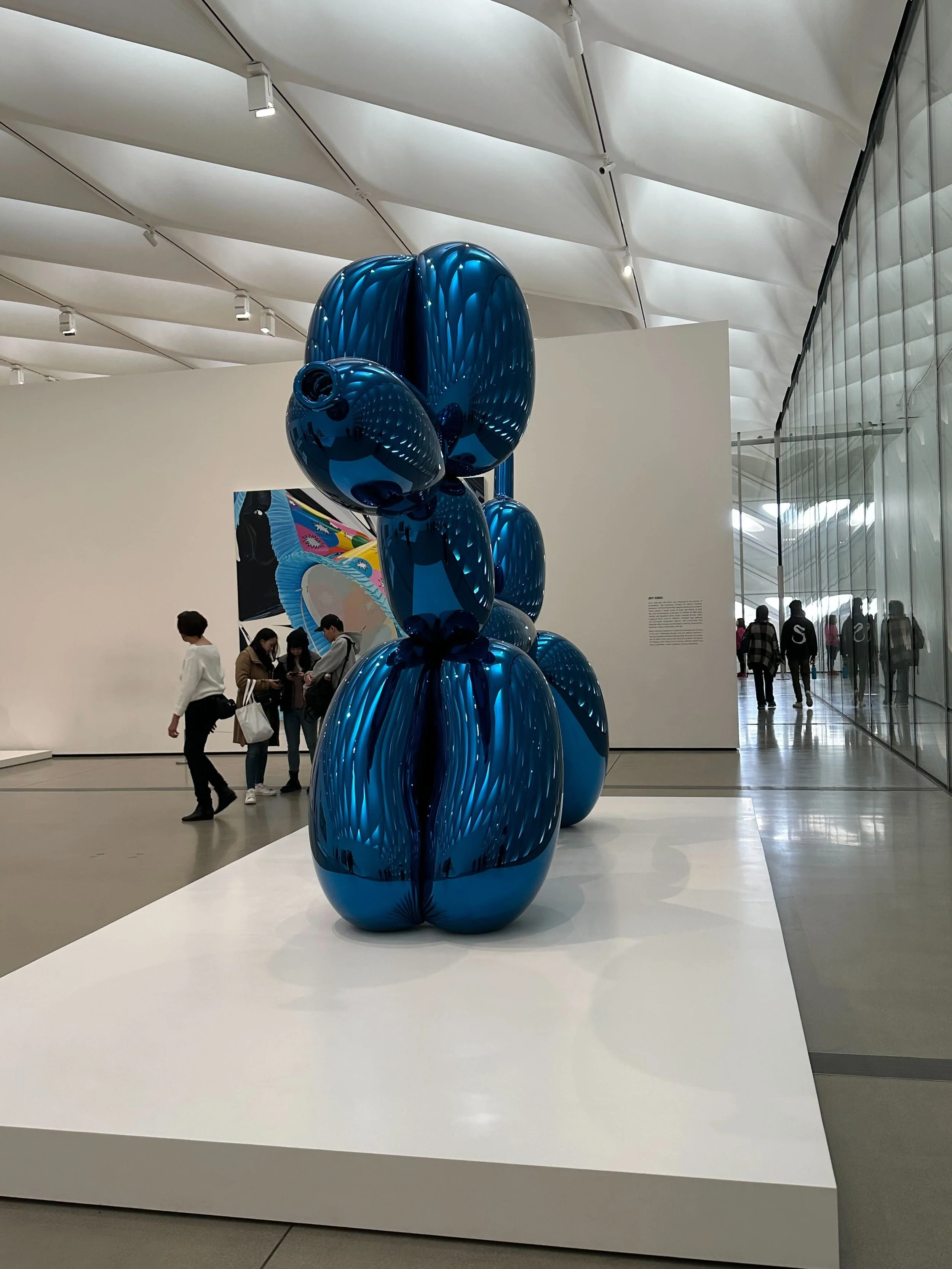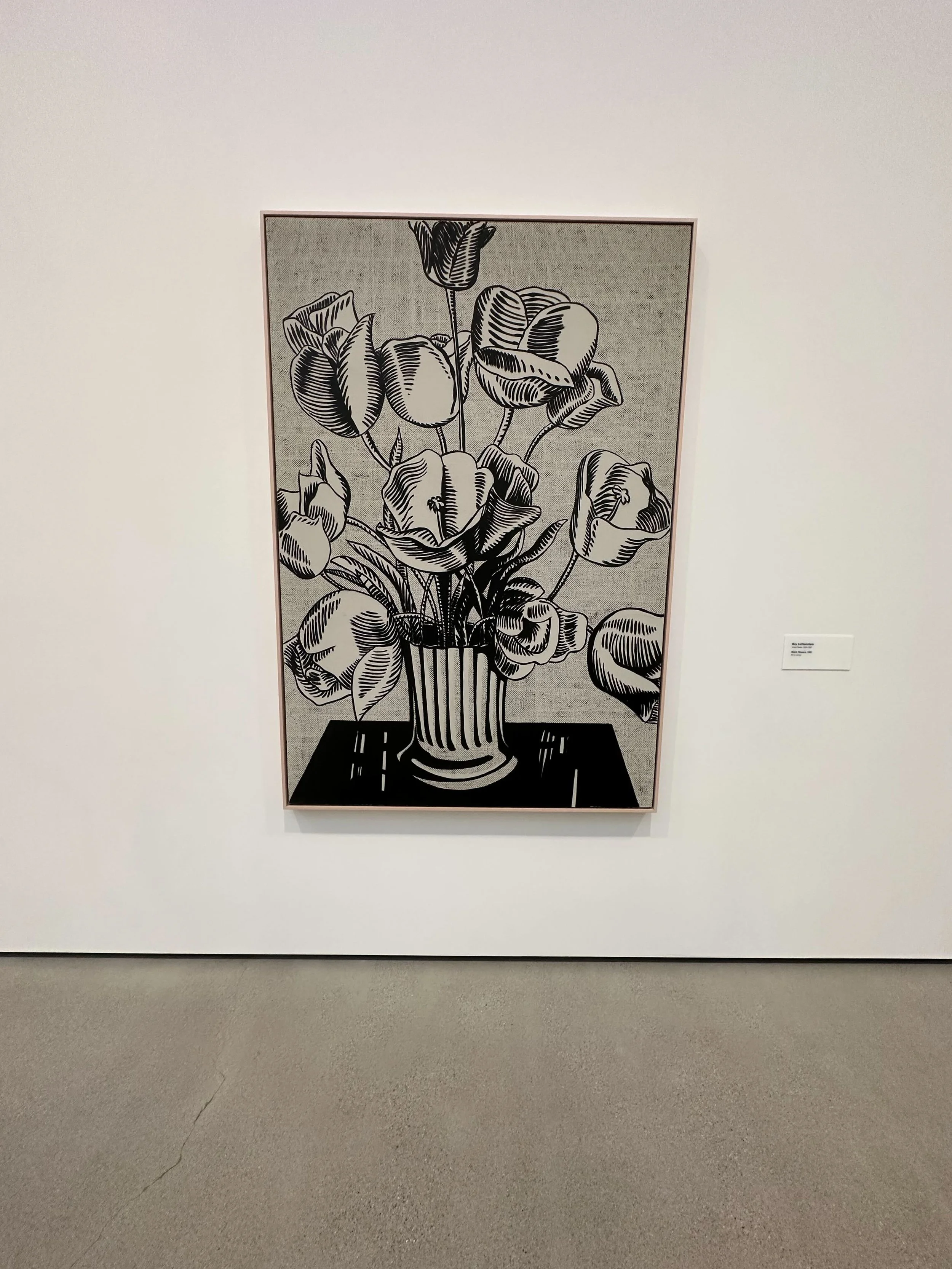LA Gems: Exploring Modern Art at The Broad
By: Lanie Brice ‘24
Growing up with an artist mom, every family vacation included at least one art museum on the itinerary. While my mom loves the impressionists, I found myself making a B-line for the pop art collections, particularly works by Andy Warhol. I developed a fascination with his renderings of Campbell’s soup cans after seeing the full wall of them at the MoMA when I was 10. I was over the moon when I realized that some of Warhol’s paintings hang in a museum only a few blocks away from my downtown apartment. Since I stayed in LA for spring break, I made sure to schedule a day to explore.
The Broad is one of a collection of museums featuring modern art scattered around Los Angeles including the MOCA (located across the street from the Broad), the Norton Simon Museum, and the LACMA, but it is one of the most exclusively devoted to showcasing art from the recent past. It’s located in the Bunker Hill neighborhood in Downtown near City Hall and the Central branch of the LA Public Library. The area is surprisingly quiet for being in the heart of the city, and there’s a gorgeous park and cafe next to the museum to get a treat and hang out before you make your way home.
To cover the logistics, the Broad is free to visit for everyone, but they do require that you reserve an entry time prior to arriving at the museum. This can be done online as late as the day before or even the day of, though there will be fewer times available the more last minute you book. There are a few special exhibits that do require a small fee (around $18 to view), and if you’d like to see the incredibly cool looking Yayoi Kusama’s Infinity Mirror Rooms, you’ll have to mark your calendar because (free) tickets are only released the last Wednesday of the month at 10 a.m.
Getting to the museum from USC is fairly easy. If you have a car, it’s a quick 10-15 minute drive. Parking is $17 for 3 hours with validation in the museum underground garage. It’s also easy to access from campus without a car. Simply hop on the Metro E line which runs behind campus and ride the train all the way until it’s final stop at the 7th Street Metro Station in Downtown. It’s about a 15 minute walk from the station to the museum, but be warned, you’ll have to climb a pretty steep hill on the way up.
Now for the fun stuff. When you get to the museum, you’ll want to take a second to take in the fascinating geometric architecture of the building itself. To enter, you’ll check in with the friendly museum staff outside who will scan your tickets and direct you to the proper doors. Once inside, you’ll immediately board the world’s longest escalator that delivers you to the third floor through a gray, arched tunnel that feels like an art installation in itself. From there, it’s a bit of a choose your own adventure as you’re presented with a cavernous, warehouse-like room that’s subdivided into maze by shorter white walls that don’t reach the ceiling. It would’ve been helpful if there were footprints painted on the floor showing us which direction we were meant to start wandering in.
The first small room I visited was dedicated to interesting paper cut outs that seemed to tell a story. There were large, blown up versions affixed to the wall and then there was a glass case in the middle of the room showcasing the actual small scale paper cutting. These creations are by Kara Walker and were made in 1996. Called African’t, this artwork showcases pre-Civil War scenes that include characters from folk stories like Brer Rabbit pushed to extremes. The intent of the work is, “... demonstrating that the repression of history comes only at society’s peril.” Like much of the art museum, despite being created decades ago, the message of the work feels remarkably like it’s directly issuing a warning about what’s happening in America today.
While modern art typically uses a variety of mediums and takes shape far away from traditional paintings, there was one, nearly impressionistic piece that caught my eye. On a wall nearby Walker’s work hung a painting of a girl on a swing that looked like a chaotic piece of Pollack-like modern art full of rich browns, toupes, and greens, until you give it a second look and noticed the blurry figure of a girl on a swing taking shape. While it often feels like museums are made to showcase works created long ago, even in a modern art museum, it surprised me to see that Cecily Brown painted this nearly impressionistic work in England in 2004.
Another installation that felt incredibly, painfully resonant to the present moment was the massive canvas of Barbra Kruger’s untitled work that has “Your body is a battleground” written over a woman’s face rendered in a pop art vein. Created in 1989, the informational plaque discussed how this artwork came from a time where women’s rights were at risk, similar to the tragic rollbacks of abortion rights we’re seeing today. “The year 1989 was marked by numerous demonstrations protesting a new wave of antiabortion laws chipping away at the 1973 Roe v. Wade Supreme Court decision.” It’s a piece that’s lingered in my mind since the days I first saw it, and it was a painful reminder that history often repeats itself over and over and over.
The next room felt like ingesting one of the magical cookies in Alice in Wonderland and shrinking down to suddenly be tiny. One of the most well known works in the Broad’s collection is Under the Table, a massive sculpture of a dining set created by Robert Therrien. You’re allowed to walk under the table and all around the chairs, so long as you don’t touch the work itself.
There’s a section devoted to a name you might be familiar with, New York artist Jean-Michel Basquiat. In the ‘70s, his graffiti gained attention, and he went on to become a fixture in the art world where he created interpretive work that, “... celebrates histories of Black art, music, and poetry.” If you want to see even more of Basquiat’s work, the commercial space across the street from the museum is currently installing a more extensive Basquiat exhibit that should be opening in the next few months.
Another popular highlight of the museum are the larger than life works by Jeff Koons. While one of his balloon sculptures is located at the top of the escalator, the majority of his candy colored creations are presented together in an open room that includes paintings, stainless steel sculptures, and more traditional porcelain sculptures (notably an extraordinarily creepy rendering of Michael Jackson). The variety of mediums and subjects, from party hat paintings to a giant balloon animal sculpture to a silver bunny sculpture, are bonded by a central theme with the website noting they, “... memorialize the rituals, icons, and images surrounding birthdays, holidays, and other party occasions.” This is one of the most colorful, exciting, and whimsical parts of the museum and, because of that, it can often be one of the more crowded spaces.
At this point, I finally stumbled into Andy Warhol’s section of the museum which was somewhat disappointingly relegated to a narrow space that almost resembled a hallway. The handful of art here does offer a solid survey of Warhol’s greatest hits. There’s a Marilyn, two soup cans, a Dance Diagram, and Jackie Kennedy in a large, repetitive screen print. There’s also work on display that feels surprising for Warhol as it deviates from his signature style including a pen and ink drawing of the guts of a dishwasher.
Looping my way back to the start of the exhibit led me through an extensive collection from another notable modern artist, Roy Lichenstein. The second I walked into the room filled with giant, comic book inspired paintings, I had flashbacks to my elementary school art classes where I first learned about his work. This collection has traditional comic book style illustrations of people as well as surprising works like a black and white vase of flowers. The large collection was able to showcase the evolution of his work and career over decades. As I exited this section of the museum, I realized that I’d accidentally started walking through the museum backwards based on where the introductory summaries were on the wall. I guess I can now confirm that this museum is an incredible experience no matter which direction you choose to wander through it.
The stairs are the easiest way down (though if you need it, there’s a very cool glass tube elevator, it’s just very small so there was a considerable wait), but the annoyance of having to navigate 3 flights of stairs is abated by the hidden gems inside. As you wander down the stairs, you’re given access to windows that look straight out of an aquarium that let you peer in on the museum’s warehouse style archive where the paintings that aren’t on display are housed in contraptions that look straight out of the doors scene in Monsters Inc. If you’re lucky, you’ll even get a glimpse of a museum curator walking through the concrete space trying not to make awkward eye contact with you. It’s incredibly fun to get a tiny glimpse of the “behind the scenes” area and made me wish I could take a tour of these secret space.
From there, you’re funneled out to the gift shop on the conclusion of the tour. The Broad left me feeling inspired, excited, and giddy about art. As a writer, not a visual artist, I still felt the magic of creation transferring from these paintings into my brain and offering inspiration to rededicate myself to my own work. I can see myself returning for many more trips before my time at USC is up, and I couldn’t recommend making the trip to the museum before you leave school as well.
Want more from Trojans 360?
Visit Trojans 360 on Facebook & Twitter to stay up to date with more student content! You can also Ask A Trojan an anonymous question, and we’ll try to answer it in a future post. And don’t forget to follow us on Instagram!
Trojans 360 is USC’s official student-run blog. Content created by students, for students.













